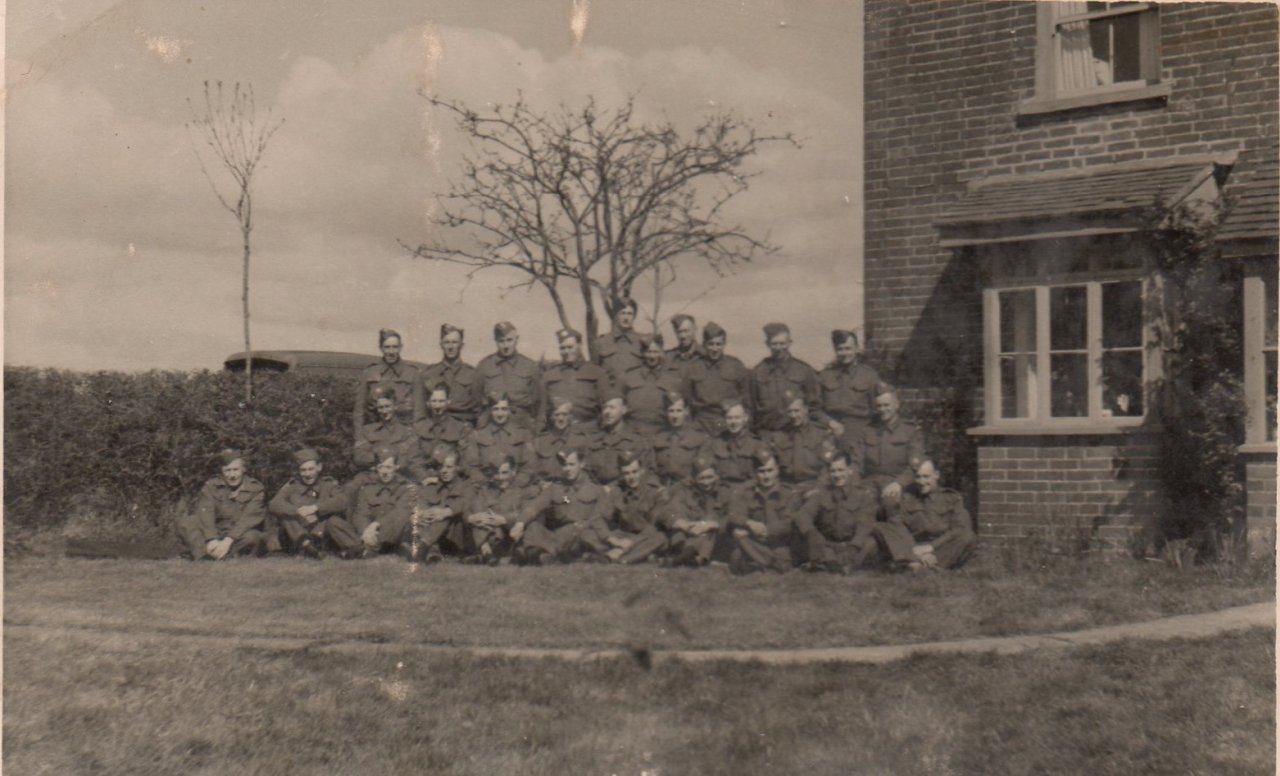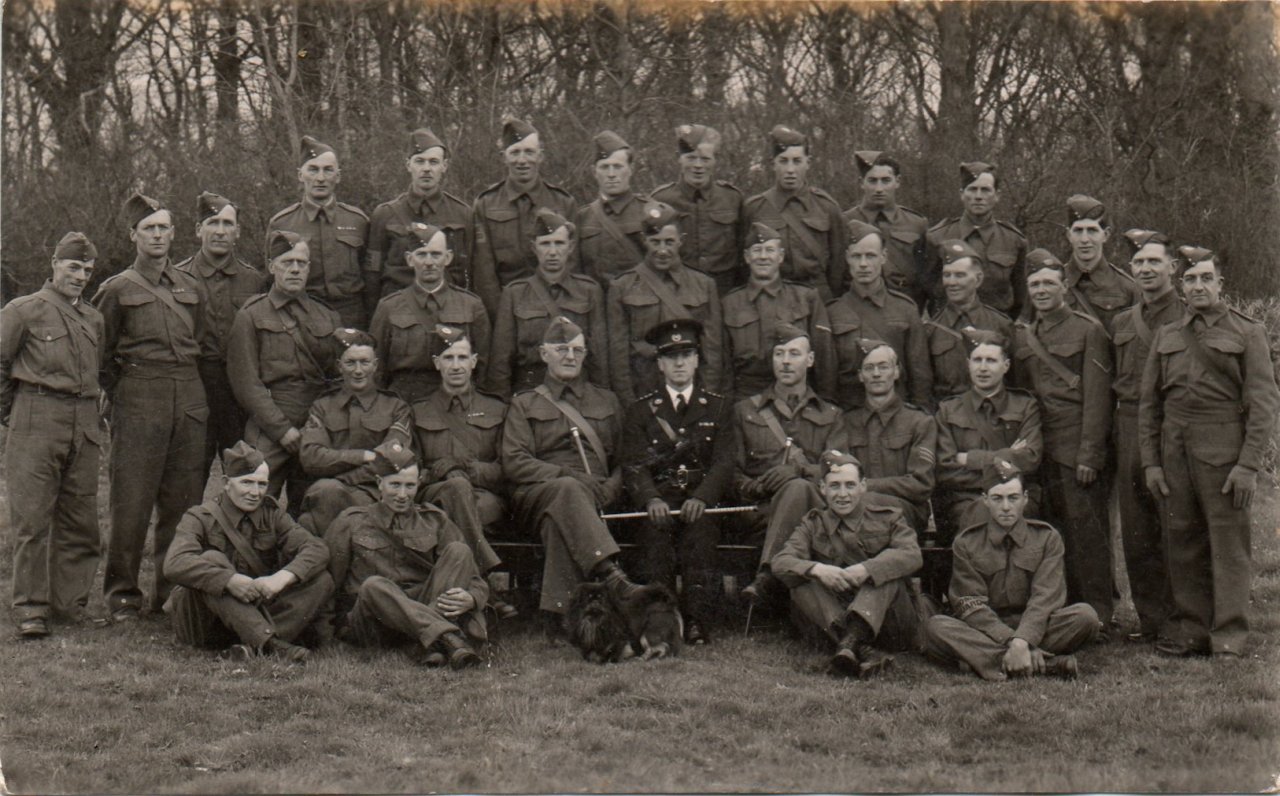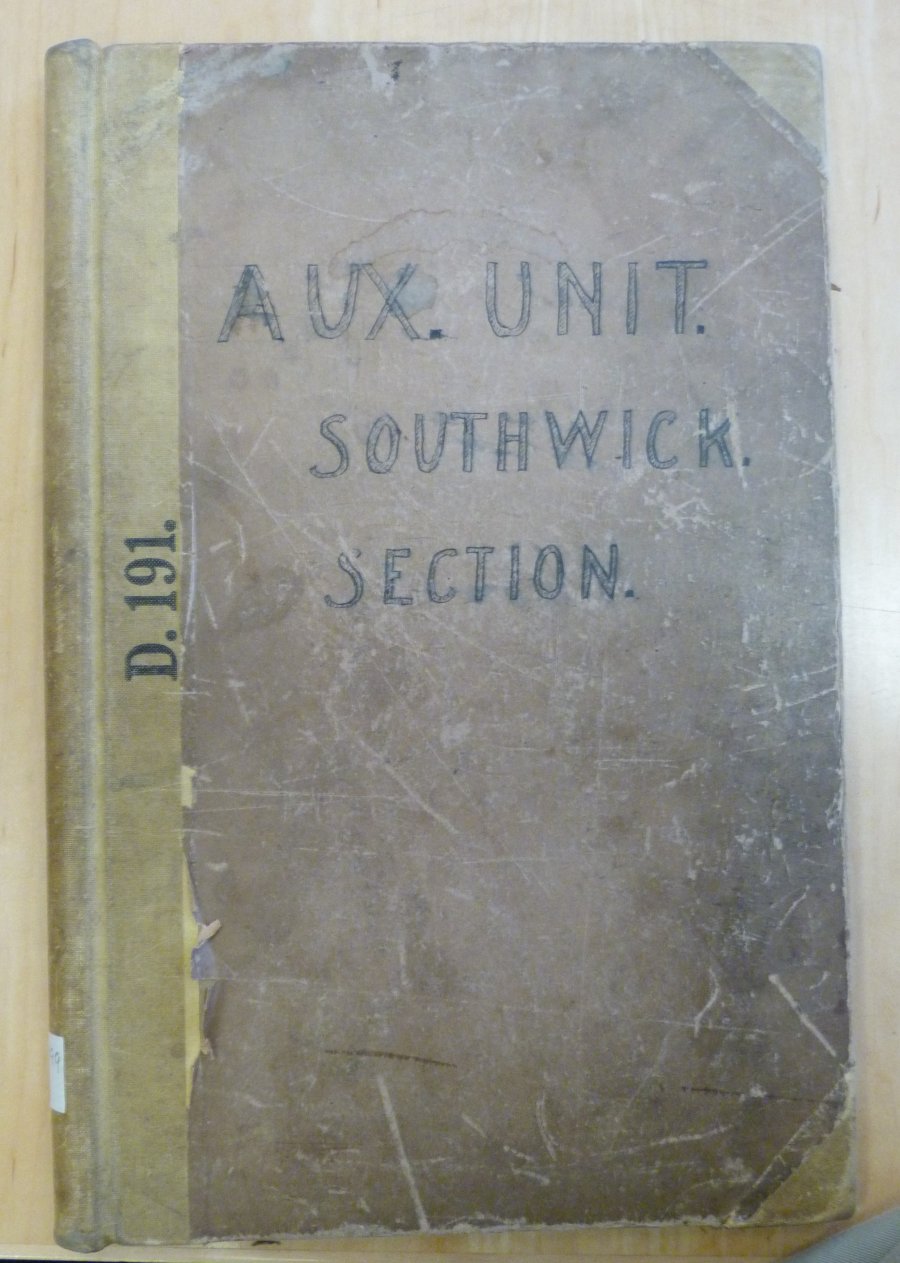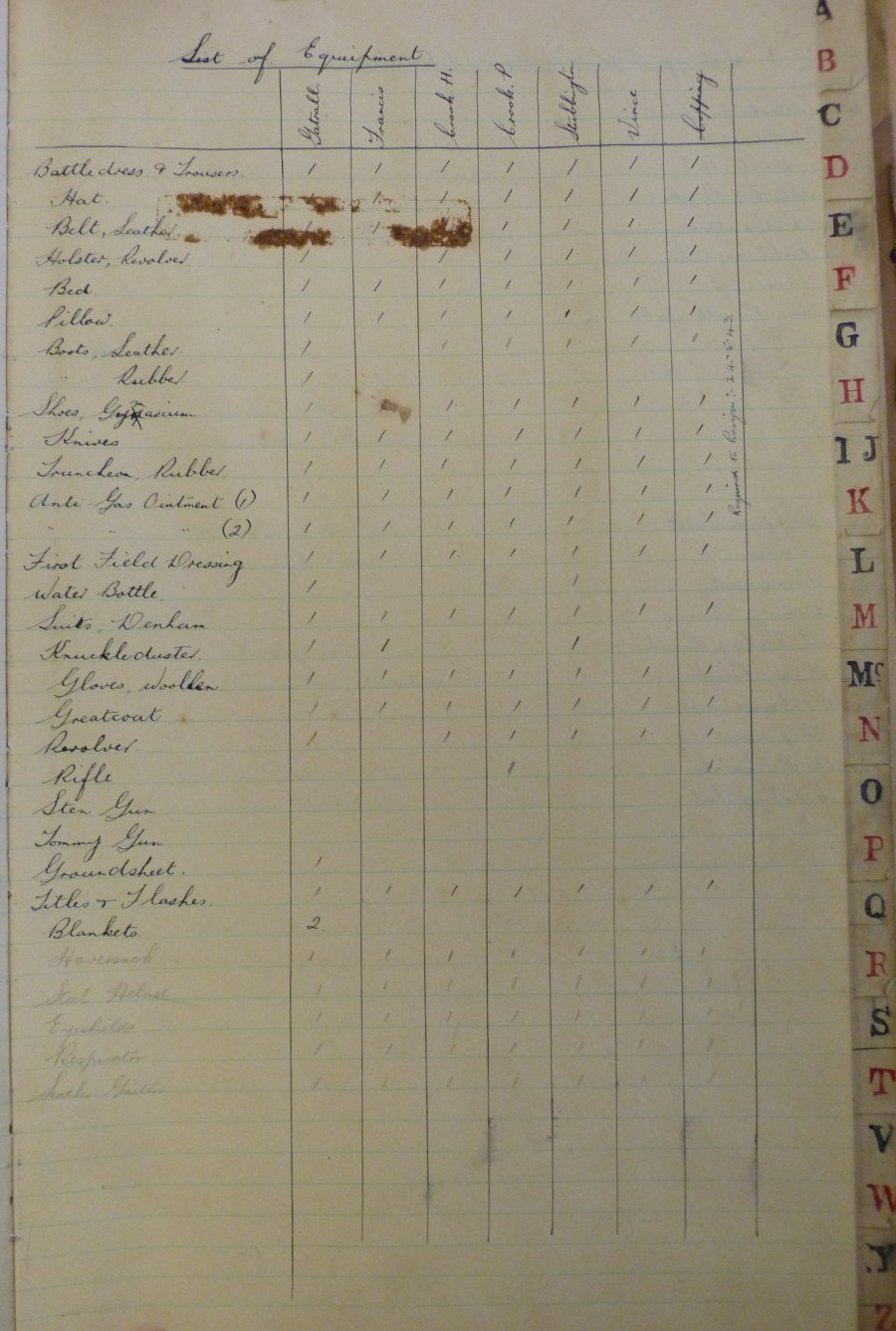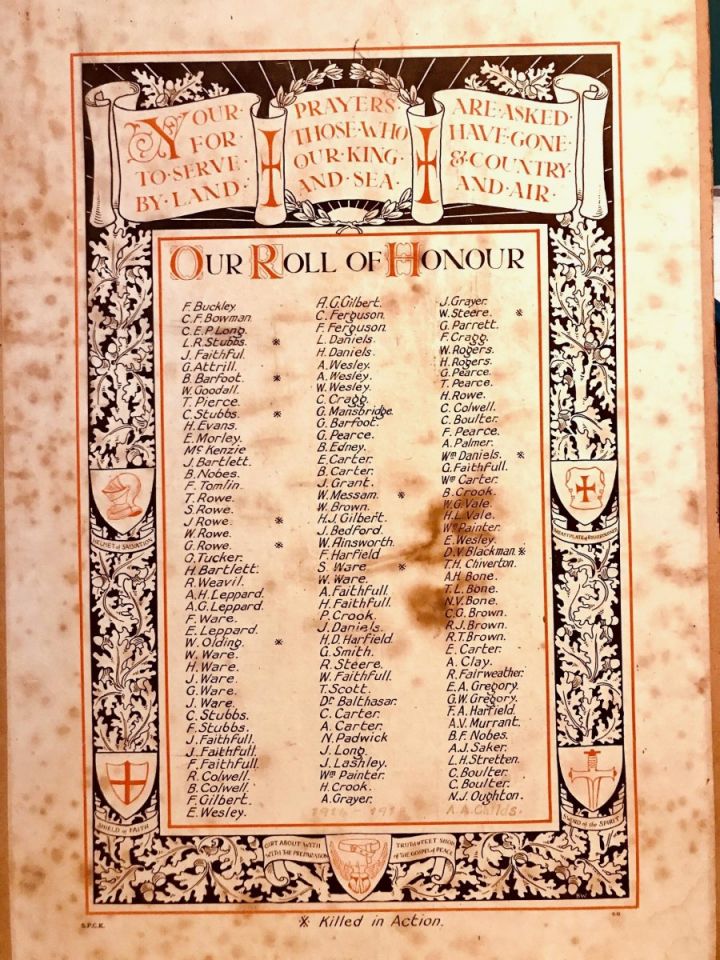Southwick is a village a few miles north of Portsmouth.
| Name | Occupation | Posted from | Until |
|---|---|---|---|
| Sergeant George James Gatrall | Joiner - Leading man H.M Dockyard |
27 Mar 1941 | 03 Dec 1944 |
| Corporal Leonard Harry James Stubbington | Retail fruiterer |
07 Jan 1942 | 03 Dec 1944 |
| Private Ronald William Copping | Builder's laborer |
12 Dec 1942 | 1943 |
| Private Horace Roy Crook | Market gardener |
02 Oct 1942 | 03 Dec 1944 |
| Private Percival William Crook | Cowman |
02 Oct 1942 | 03 Dec 1944 |
| Private Horace George Ferguson | Market gardener, ploughman and motor driver |
26 Oct 1942 | 03 Dec 1944 |
| Private John Henry Francis | Carpenter and joiner |
10 Oct 1942 | 03 Dec 1944 |
| Private Charles Arthur Jesse Vince | Grocer (Shop keeper) |
10 Oct 1942 | 03 Dec 1944 |
| Private Leslie Jelly Wright | Farm foreman |
10 Jun 1940 | 01 Oct 1942 |
According to Elliott Cowton (resident of Porchester) who knew Sergeant Gatrall, the OB was in the grounds of Southwick Priory, "Over the wall", north of Southwick - the presence of various ponds mean it was most likely in the wooded areas. Other sources reported to researcher Rob Mills suggested that it had been under the Scout hut (old village hall) or alternatively in the small copse where the main road roundabout now stands. Despite its precise location being uncertain, we know a fair bit about the Operational Base.
The Southwick Patrol diary reports that the Patrol had both an OB and underground ammo dump.
The OB was taken over on the 15 Nov 1942 from Hampshire Scout Section who had built the basic structure. The Patrol added a wooden floor and corked the corrugated iron which had proved to sweat a great deal. This suggests the OB was a standard elephant shelter. There was a paraffin heater and hammocks for sleeping. The Patrol had to build an effective entrance hatch and disguise. After an inspection by Lieutenant Welch, they were asked to do away with the exit door and to make a tunnel exit door away from the entrance. Building the new escape hatch took 22 hours over 3 days to complete. The only other clue is that one entry records shooting practice in a chalk pit by the OB.
The ammo dump was dug by the men themselves in April 1943. Its construction was delayed when the men hit solid clay, but completed in the end. It was large enough to comfortably fit a man inside and was fitted with shelves and a camouflaged entrance lid.
Southwick Patrol
The main NE-SE road from the road hub at Wickham to Cosham where the arterial A3 ran north from/to Portsmouth. Wickham had the A32 arterial road running north to Bishops Waltham and Corehampton in the north of the area, and south to Fareham and the dock at Gosport.
The Southwick Patrol would also have been well placed to interdict the myriad of the minor roads through its zone, should a German landing occur in Portsmouth harbour and attempts be made to advance north behind Portsdown Hill inland.
Another task, later in the war, may have been to patrol the grounds of Southwick House, which became the command HQ for the highest D-Day planning officers.
The diary lists several locations with the type of training conducted.
• Baddesley (Bombing training)
• Chalkpit on Portsdown Hills (preparation for Number 5 Group Patrol competition),
• Hipley Copse (Explosives training),
• Hole Farm (Explosives training),
• Rookesbury Hall, Newton (Unarmed combat)
• Soberton Chalkpit (Weapons practice)
Exercise locations:
• Ashlands Corner
• Broad Halfpenny Downs (Hambledon)
• Chandlers Ford
• Dean Farm (County Patrol competition)
• GHQ Swindon (for Sergeant's course)
• Glenville Woods (Hambledon)
• Goat House Hill (Newtown)
• Hoe Gate, Shoot Hill (Newtown)
• Southwick chalkpit
• Wallops Wood
• Wickham.
They received training from the Worcester Regiment Scout Section including its commander Lieutenant Allan. This included a demonstration at Hambledon..
The Diary records the men going to Hillcrest, the house of Lieutenant Welch, for training in drill and other activities.
The Patrol Diary outlines another location known, at least to the patrol leader: Hill Forest, Newtown (near Wickham).
The Patrol Diary records that each man was issued with a revolver with 36 rounds. Stubbington and Copping also received a rifle with 50 rounds, most likely a .300 service rifle imported from the USA. In December 1942 the Patrol was given a .22 rifle with telescopic sights and 200 rounds, followed a month later by 4 Sten guns with 300 rounds each. Previously shooting with the Thompson sub machine gun was mentioned, though it isn't recorded if this weapon was withdrawn when the Stens were supplied. Each man had a knife, and the Patrol had a couple of knuckledusters.
The Patrol also had the usual issues of explosives and associated stores. Blasting Gelignite and Plastic Explosive were specifically mentioned, along with Mills bombs, AW phosphorus bombs and sticky bombs. Fuses included Bickford, Cordtex, orange line and Primacord initiated by time pencils, L Delays or pressure or pull switches. On one occasion blasting gelignite was disposed of by burning as it was becoming unstable.
We are very fortunate to have the remains of the Southwick Patrol Diary to tell us about their activities. Here is a transcript. This is held in the Hampshire Record Office at Winchester, where it was rediscovered by researcher Alan Watson. The Patrol diary was reportedly found in Birmingham by Kyle Whitall and was passed to Hampshire County Record Office via Gosport Museum. CART has no information about where or when it was found, but it appears to be an official unit diary as each entry is counter-signed by the responsible Lieutenant and section leader.
Sadly, the majority of the pages have been cut or torn out for an unknown reason leaving just 32 pages (entries are from: October 1942, 1 to 21; August 1943; 24 Oct 1943 to 20 Jan 1944; and 18 to 28 February 1944; with the final entry of 12 March 1944; all subsequent pages are removed). The entries mention training, establishment of OBs/OPs (no exact locations), Number 5 Group Patrol competition in preparation for County and then national competitions, meetings of Patrol leaders (no names or itineraries), and day and night exercises.
Southwick Patrol Diary, held at the Hampshire Records Office, Winchester.
Elliott Cowton, resident of Fareham.
WO199/3391 Auxiliary Hampshire Nominal Roll
David Seaton
1939 Register
Ancestry.co.uk
